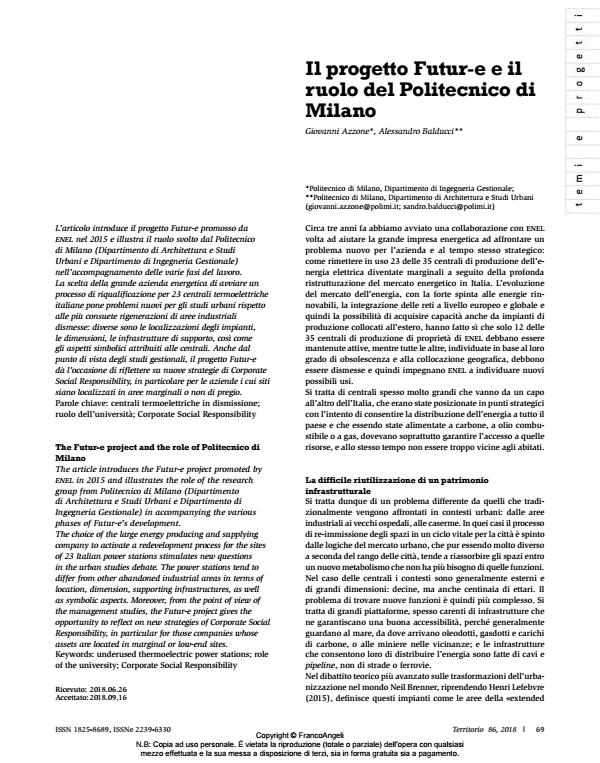The Futur-e project and the role of Politecnico di Milano
Journal title TERRITORIO
Author/s Giovanni Azzone, Alessandro Balducci
Publishing Year 2019 Issue 2018/86
Language Italian Pages 3 P. 69-71 File size 128 KB
DOI 10.3280/TR2018-086010
DOI is like a bar code for intellectual property: to have more infomation
click here
Below, you can see the article first page
If you want to buy this article in PDF format, you can do it, following the instructions to buy download credits

FrancoAngeli is member of Publishers International Linking Association, Inc (PILA), a not-for-profit association which run the CrossRef service enabling links to and from online scholarly content.
The article introduces the Futur-e project promoted by enel in 2015 and illustrates the role of the research group from Politecnico di Milano (Dipartimento di Architettura e Studi Urbani e Dipartimento di Ingegneria Gestionale) in accompanying the various phases of Futur-e’s development. The choice of the large energy producing and supplying company to activate a redevelopment process for the sites of 23 Italian power stations stimulates new questions in the urban studies debate. The power stations tend to differ from other abandoned industrial areas in terms of location, dimension, supporting infrastructures, as well as symbolic aspects. Moreover, from the point of view of the management studies, the Futur-e project gives the opportunity to reflect on new strategies of Corporate Social Responsibility, in particular for those companies whose assets are located in marginal or low-end sites.
Keywords: Underused thermoelectric power stations; role of the university; Corporate Social Responsibility
Giovanni Azzone, Alessandro Balducci, Il progetto Futur-e e il ruolo del Politecnico di Milano in "TERRITORIO" 86/2018, pp 69-71, DOI: 10.3280/TR2018-086010